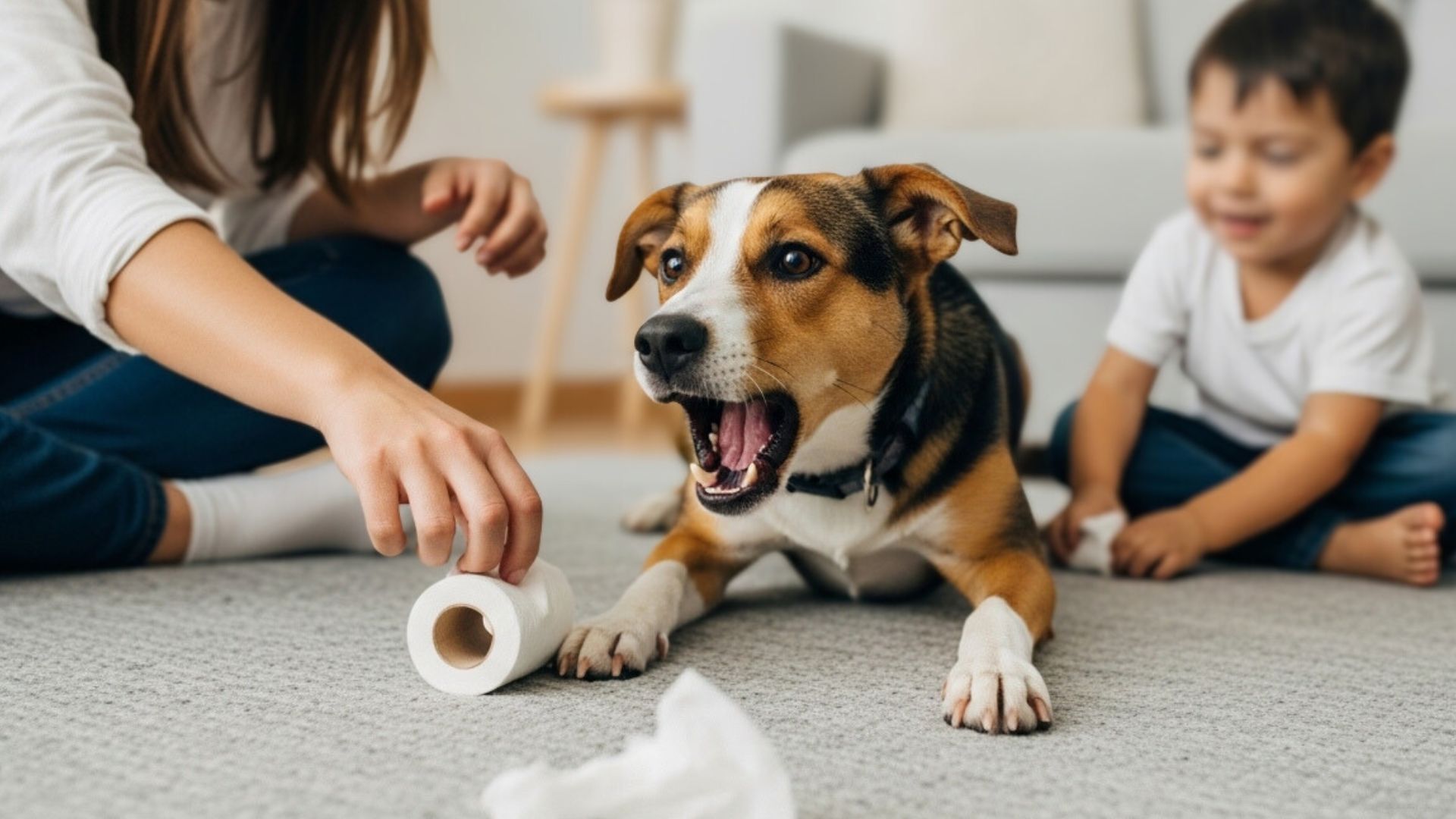Many families imagine the perfect dog: playful with children, gentle with visitors, and calm during daily routines. But reality often tells a different story. Some families find themselves overwhelmed by dogs that bark excessively, guard too aggressively, or demand more time than busy parents can give.
What was meant to be joyful companionship turns into frustration and worry. The issue usually isn’t the family’s lack of effort, but a poor match between lifestyle and breed. Dogs with strong instincts or high energy often struggle in households full of children and constant activity.
For parents, this mismatch can mean sleepless nights, stressed children, and difficult choices. Avoiding this situation begins with knowing which breeds pose the greatest challenges for families.
In this article, we’ll walk through the dog breeds that often clash with family life, giving you the insight to choose wisely from the start.
Dog Breeds To Avoid If You Want A Family Pet
1. Afghan Hound

Afghan Hounds are known for their independent mindset, which often clashes with homes that expect obedience. They make decisions based on instinct rather than commands. Training sessions can be frustrating for families that need a cooperative companion.
Grooming Demands
Their flowing coat is beautiful but requires hours of brushing each week to prevent matting, as mentioned in the AKC. Busy households with children may struggle to keep up with this care. Neglecting grooming leads to discomfort, which can make the dog irritable.
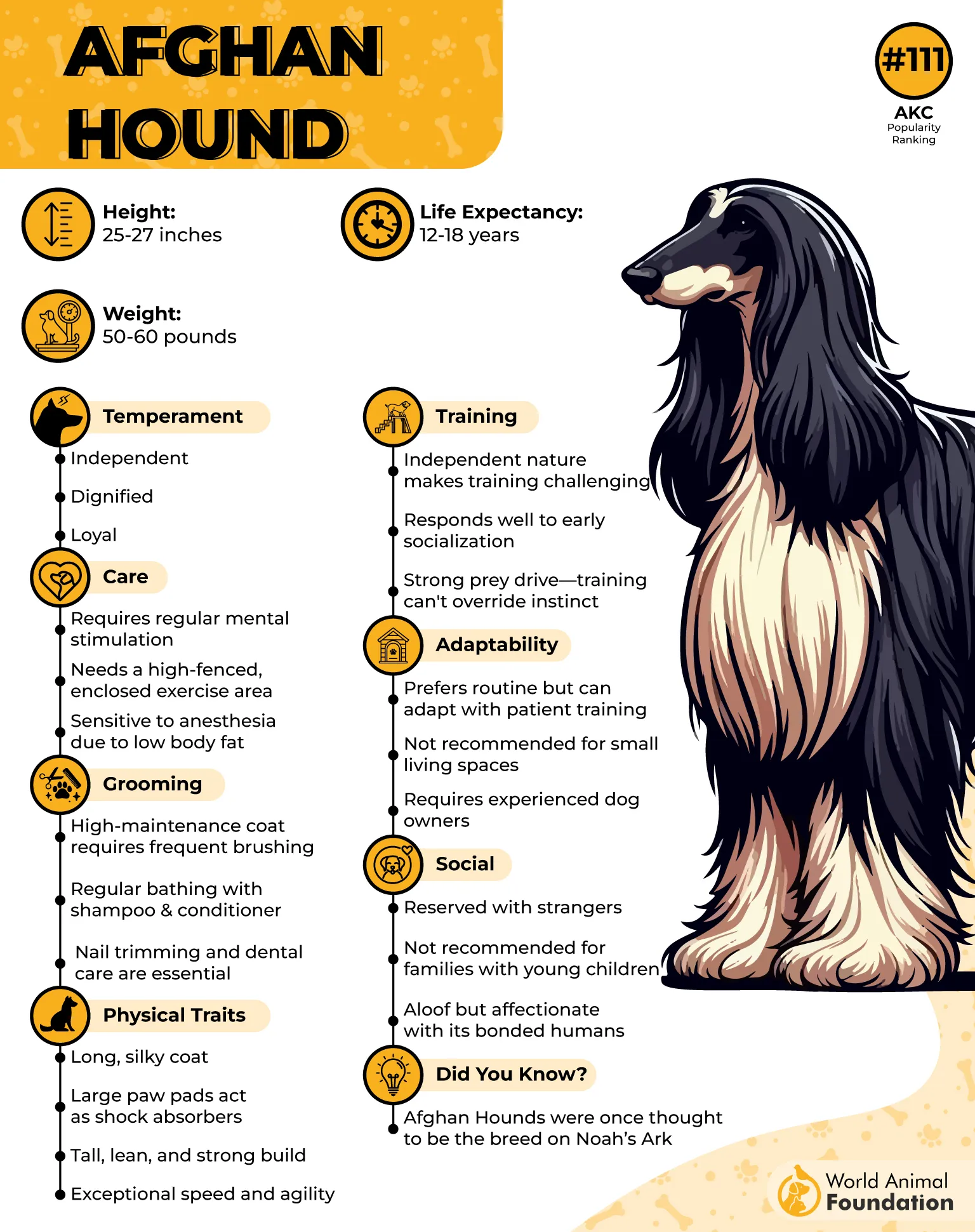
Sensitivity to Handling
Unlike certain breeds that tolerate rough play, Afghan Hounds are sensitive to touch and noise. They dislike chaotic environments, which are common in homes with active children. This sensitivity often makes them retreat instead of engaging socially.
Exercise Requirements
Though elegant and calm indoors, they are classified as energetic dogs with a strong prey drive outdoors. They can sprint at extreme speeds and may chase smaller pets if not supervised. This need for vigorous exercise makes them harder to manage compared to most dogs.
2. Akita
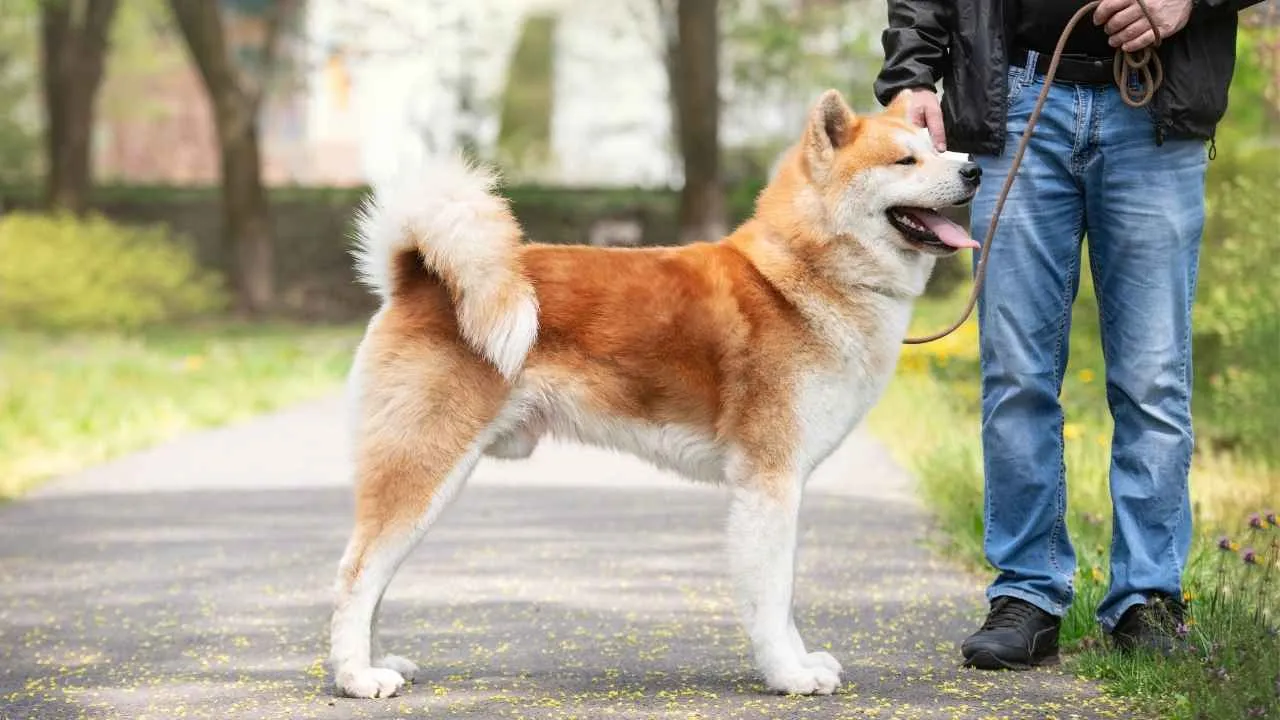
Akitas are known for their bold independence, which can make them difficult for first-time owners. They often display a dominant streak and require experienced handling. This confident nature can clash in homes where patience and adaptability are essential.
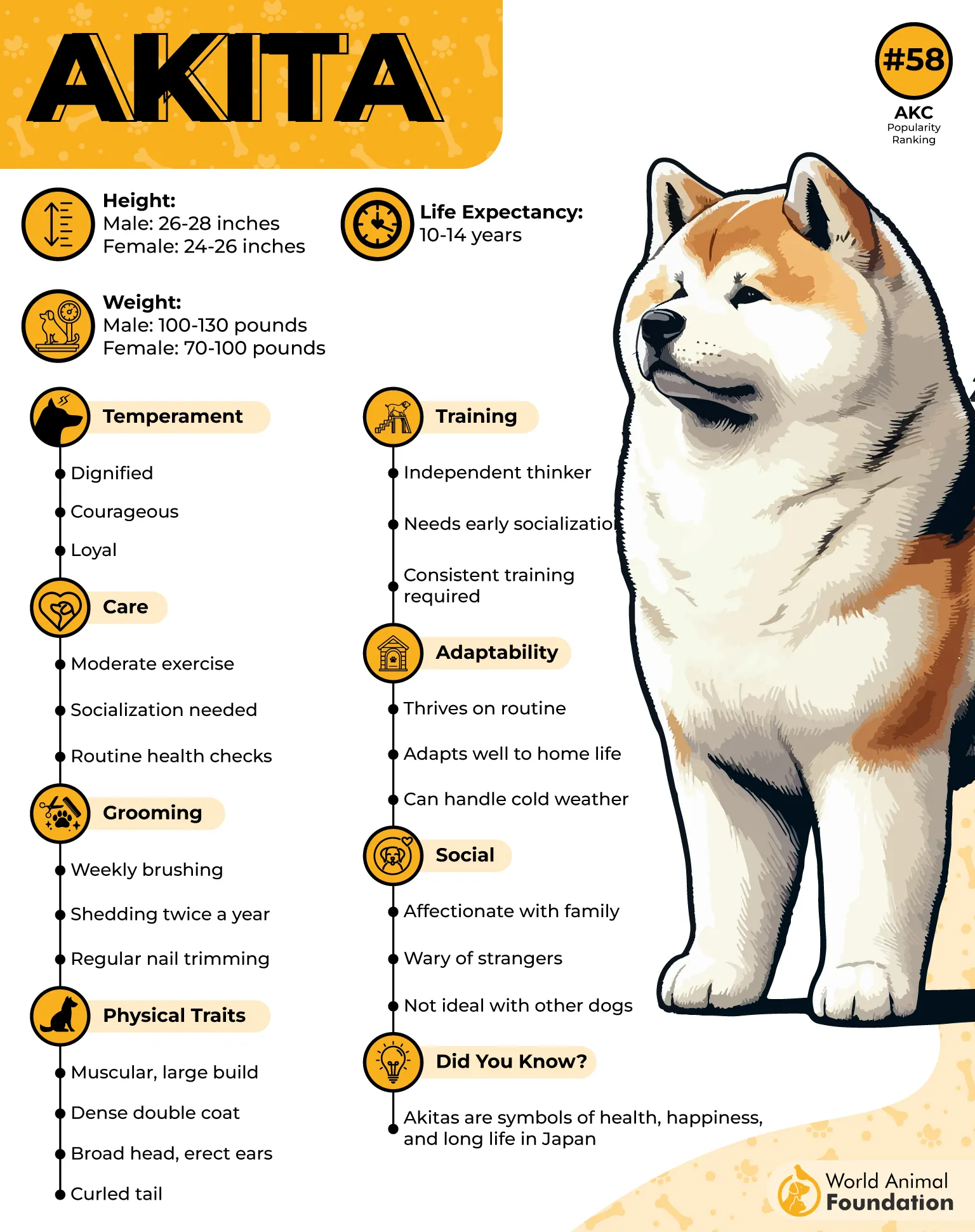
Interaction with Families
The dog’s temperament leans toward caution with strangers and even visiting relatives. They are deeply loyal to one or two people but may be aloof toward others. For households with frequent guests or younger children, this tendency can create challenges.
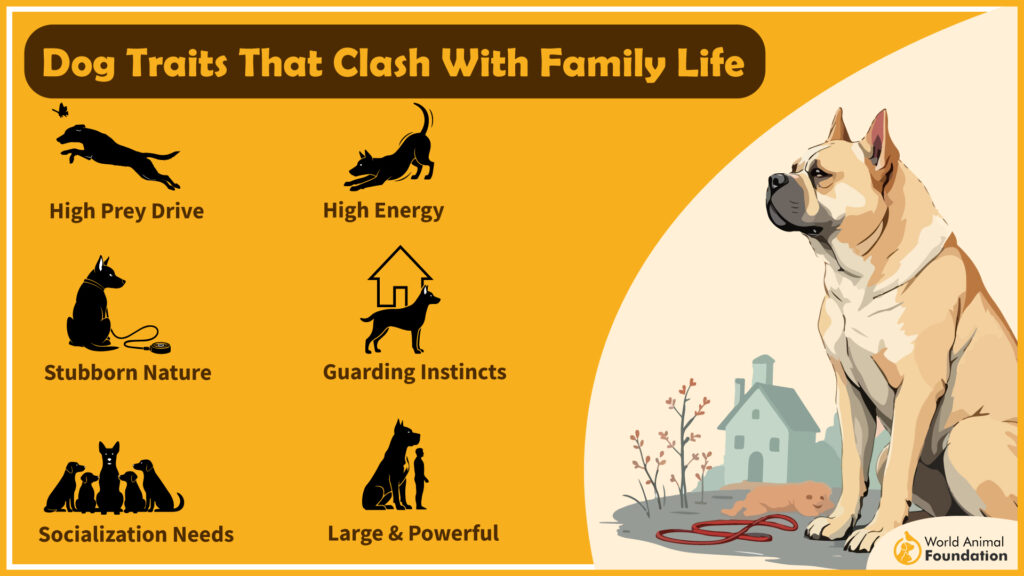
Training Demands
Akitas respond best when guidance begins early and remains consistent into adulthood. Without proper training, they may become overly territorial or reactive around other pets, as stated in the Akita Inu. Firm leadership paired with structured routines is often recommended for stability.
Concerns for Pet Parents
Their protective instincts can escalate if boundaries are unclear, leading to potential conflicts in a busy household. Some key issues that families report include:
-
Difficulty with multi-pet environments
-
Intolerance of rough play or noise
-
Heightened guarding behaviors indoors
3. Dogo Argentino
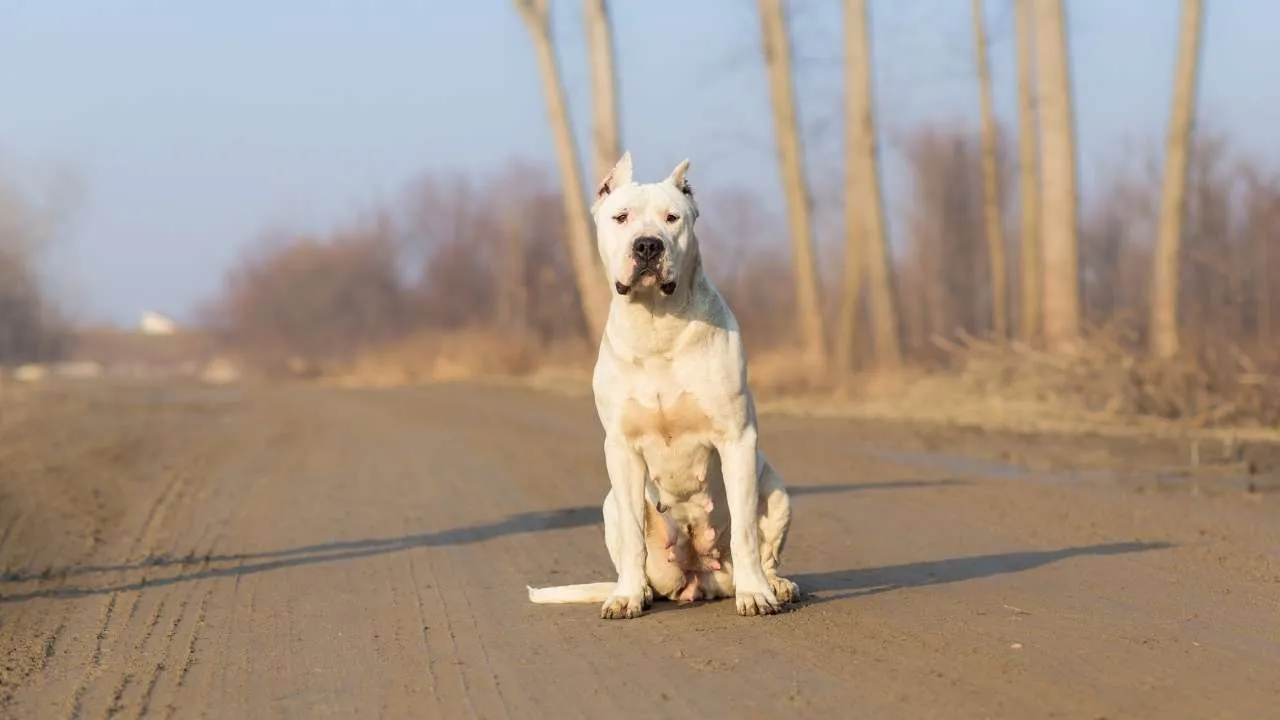
The Dogo Argentino has an intense personality that requires strong handling. It is territorial and highly protective, making it difficult for inexperienced owners to manage. These breed characteristics can quickly become overwhelming in a household environment.
Demands on Training
This breed does not adapt well without structure, as its intelligence and confidence can lead to dominance issues. It needs extensive training that begins early and must be reinforced throughout its life. Without consistent boundaries, behavior problems become difficult to reverse.
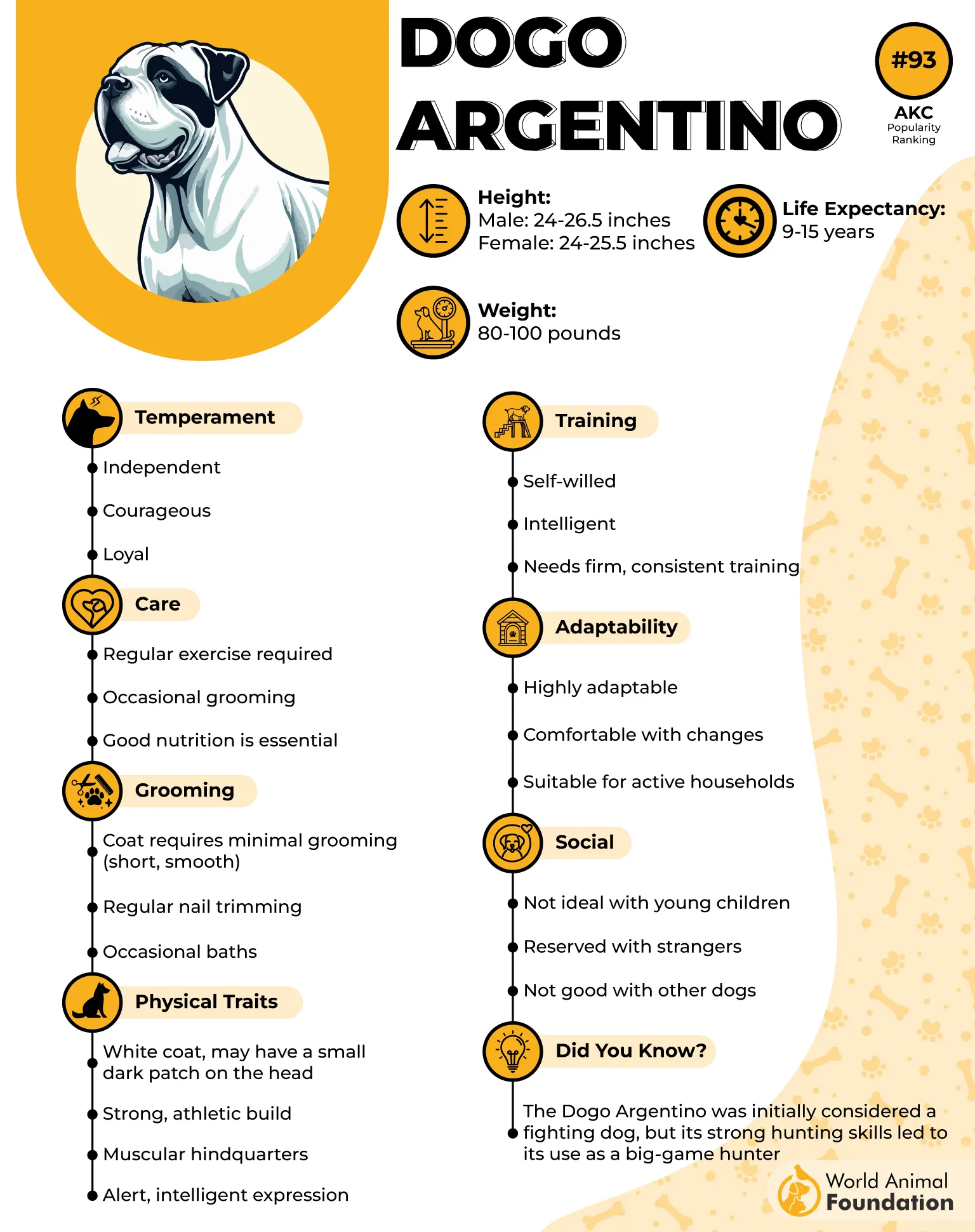
Strength and Physical Drive
Originally bred for big-game hunting, the Dogo Argentino carries both stamina and determination. Its muscular body and high energy level make it prone to chasing, pulling, and testing limits. These instincts do not naturally align with the needs of families with small children.
Suitability Concerns
Families often struggle to balance the breed’s physical requirements with household life. Some challenges include:
-
Daily vigorous exercise needs
-
Socialization with people and pets
-
Monitoring for signs of over-guarding behavior
For many homes, these demands are simply not practical.
4. Fila Brasileiro
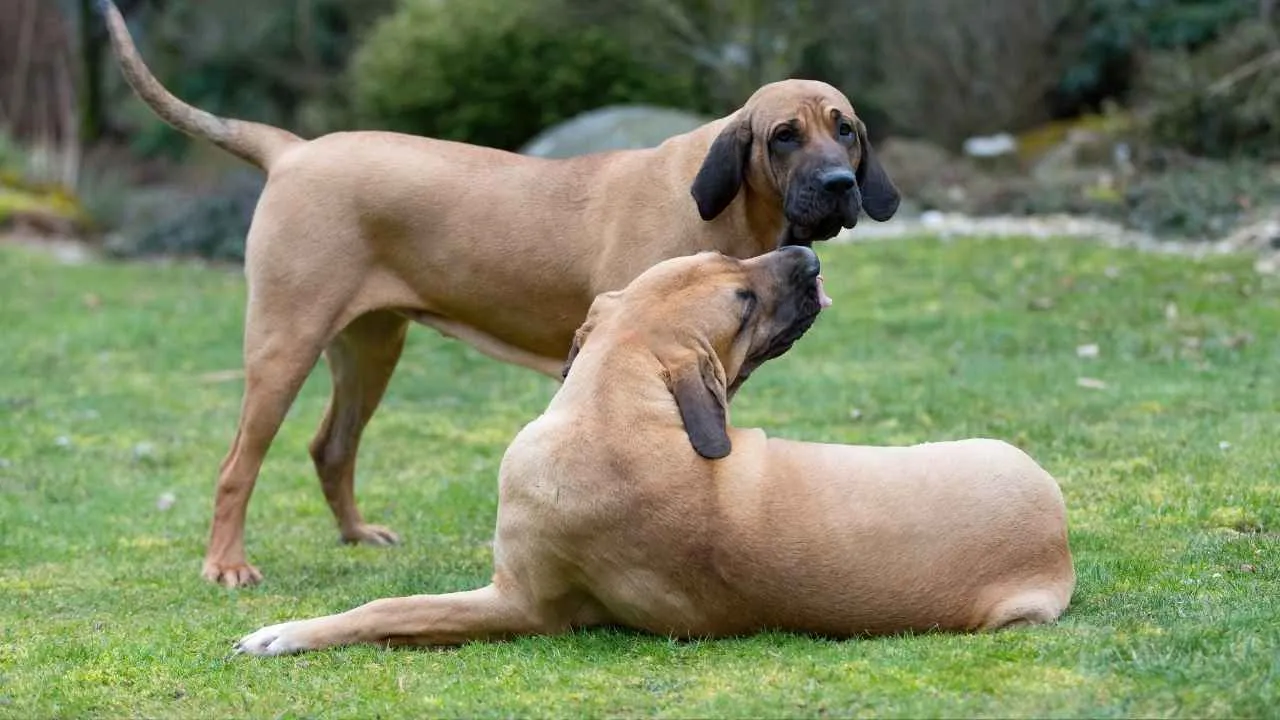
Did You Know: The Fila Brasileiro is famous for the trait called ojeriza, meaning an inborn distrust of strangers.
Fila Brasileiro has a temperament built around loyalty and defense, often becoming deeply suspicious of strangers. This intensity can escalate quickly, making it unsuitable for households with frequent visitors. Its protective drive is hardwired and difficult to moderate in busy family environments.
Socialization Challenges
Even with early introductions, this breed rarely accepts unfamiliar people or pets comfortably. The tendency to show aggression toward other dog breeds has been noted in multiple registries. Managing these behaviors requires constant oversight and strict boundaries in shared spaces.
Legal Restrictions in Some Regions
This specific breed is banned or restricted in several countries due to its reputation for unpredictable aggression. Families considering such a dog must be aware of these legal issues. Inexperienced owners often struggle to control their strong instincts without professional guidance.
High Responsibility Ownership
Fila Brasileiros demand structure, confidence, and ongoing control, which is why reputable breeders emphasize selective placement. Their temperament requires an experienced handler who understands advanced training techniques.
5. American Bulldog

American Bulldogs have a natural guarding temperament that can become overwhelming in a household setting. Their alertness and strong drive to protect territory may lead to unpredictable reactions when visitors or new faces enter the home.

Challenges Around Children
This large dog breed carries significant power and energy, which makes handling difficult for families with limited experience. The intensity of their play and quick responses can be risky around young kids who may not recognize boundaries.
Training and Consistency Needs
They demand early socialization and ongoing structure to manage their behavior safely. Without proper guidance, they may show dominance issues or test limits in family settings. Bad owners who neglect this level of commitment can unintentionally encourage problematic behavior.
Exercise and Lifestyle Fit
Daily physical activity is a requirement for this breed, and without it, frustration can quickly escalate. Their size and stamina make them unsuitable for families unable to dedicate the necessary time. Mismanagement of this energy has led to them being unfairly labeled as bad dogs.
6. Gull Dong
Did You Know: The Gull Dong was developed by crossing the Bully Kutta with the Gull Terrier, combining size with relentless drive, which explains its reputation for power.
The Gull Dong is a powerful Pakistani mastiff-type breed originally developed for guarding and fighting purposes. Its sheer strength and determination make it extremely hard to control in a household environment. Without consistent boundaries, it can quickly become dominant.
Compatibility Issues
This is not a breed suited for the average person looking for a companion dog. Their unpredictable aggression and strong prey drive make them risky around children or visitors. Even well-raised individuals may react defensively in unpredictable situations.
Training Demands
A Gull Dong requires an experienced owner who can dedicate time to control and structure. Obedience does not come naturally, and mistakes in handling may encourage unwanted behavior. Socialization alone is not enough to reduce their guarding instincts.
Mental and Physical Needs
High-intensity exercise and mental stimulation are both essential to keep this breed manageable. Without these outlets, frustration can turn into destructive or aggressive tendencies. Their demanding lifestyle makes them unsuitable for a family-focused household.
7. Japanese Tosa
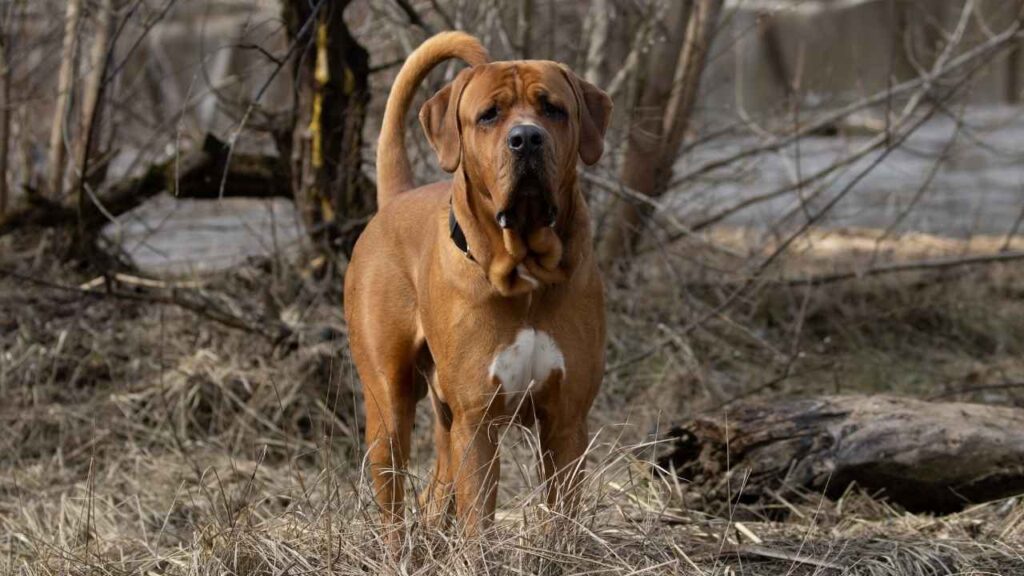
Did You Know: The Japanese Tosa is often called the “sumo wrestler of the dog world” because of its traditional role in Japanese-style dog fighting matches.
The Japanese Tosa was originally developed for dog fighting in Japan, which shaped its temperament into one that demands firm handling. This background still influences its strong dominance drive. Families often find these instincts difficult to manage inside a household environment.
Temperament Concerns
This breed is known for being quiet and calm indoors until triggered, but its reactions can be sudden and overwhelming. It is often described as reserved with strangers and prone to suspicion. Such traits raise concern when placed in busy homes filled with children and frequent visitors.
Demanding Ownership
A Japanese Tosa requires exceptional commitment from an owner experienced with large, strong-willed breeds. Without careful guidance, its intensity can lead to unpredictable situations. Key needs include:
-
Constant supervision in social settings
-
Structured obedience reinforcement
-
Firm leadership that never lapses
Legal Restrictions
One of the clearest indicators of its risk in family homes is the number of countries where the breed faces legal restrictions or outright bans. These laws were created because of the dog’s power and history in combat roles. Owning one in a family setting may even be prohibited in some regions.
Conclusion
Choosing the right companion for your household begins with honest reflection on lifestyle and limits. Not every breed is meant to be a family dog, especially when energy levels, space, or temperament do not align with daily routines.
Parents must consider how children treat pets and whether the dog’s instincts will tolerate noise and activity. Some breeds may be small in size yet incredibly stubborn, while others appear calm but turn into a restless challenge without structure.
Even the couch potato breeds demand attention when boredom sets in. To avoid disappointment, it is wiser to steer clear of mismatched choices and select an animal that grows into the right puppy for lasting harmony.


